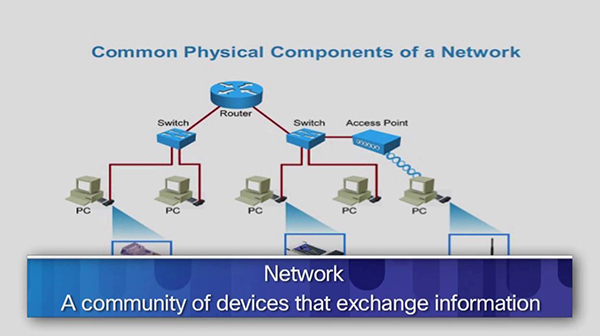


Rouzanna Sargsyan

This course provides an integrated and comprehensive coverage of networking topics, from fundamentals to advanced applications and services, while providing opportunities for hands-on practical experience and skills development. The course also helps course participants develop essential skills and builds a foundation for success in networking-related careers.
Course participants will be prepared to take the Cisco CCENT* certification exam after completing a set of two courses and the CCNA Routing and Switching certification exam after completing a set of four courses.
The course includes the following four modules:
This course introduces the architecture, structure, functions, components, and models of the Internet and other computer networks. The principles and structure of IP addressing and the fundamentals of Ethernet concepts, media, and operations are introduced to provide a foundation for the curriculum. By the end of the course, participants will be able to build simple LANs, perform basic configurations for routers and switches, and implement IP addressing schemes.
This course describes the architecture, components, and operations of routers and switches in a small network. Participants learn how to configure a router and a switch for basic functionality. By the end of this course, participants will be able to configure and troubleshoot routers and switches and resolve common issues with RIPv1, RIPng, single area and multi-area OSPF, virtual LANs, and inter-VLAN routing in both IPv4 and IPv6 networks.
This course describes the architecture, components, and operations of routers and switches in larger and more complex networks. Participants learn how to configure routers and switches for advanced functionality. By the end of this course, participants will be able to configure and troubleshoot routers and switches and resolve common issues with OSPF, EIGRP, and STP in both IPv4 and IPv6 networks. Participants will also develop the knowledge and skills needed to implement a WLAN in a small-to-medium network.
This course discusses the WAN technologies and network services required by converged applications in a complex network. The course enables participants to understand the selection criteria of network devices and WAN technologies to meet network requirements. Participants learn how to configure and troubleshoot network devices and resolve common issues with data link protocols. Participants will also develop the knowledge and skills needed to implement virtual private network (VPN) operations in a complex network.
* Cisco CCENT (Cisco Certified Entry Networking Technician) certification validates the ability to install, operate and troubleshoot a small enterprise branch network, including basic network security.
** CCNA Routing and Switching certification exam tests a candidate’s knowledge and skills related to network fundamentals, LAN switching technologies, IPv4 and IPv6 routing technologies, WAN technologies, infrastructure services, infrastructure security and infrastructure management.